
The term naumachia was used in the ancient world for staged naval combats and the structures that were built to host them. Naumachia were in many ways an inevitable progression of Roman blood sports which, by the late first century BCE, had become increasingly violent. The most famous of these spectacles was, of course, gladiatorial combat - where pairs of warriors were pitted against one another in an arena. The earliest gladiatorial combat dates back to the First Punic War in 264 BCE. On that occasion only three pairs of gladiators fought, to honour a dead general's father. They were a munus - a gift to the departed. Throughout Rome's history the numbers of combatants grew larger and larger in 216 BCE games lasted three days, with 22 pairs of gladiators, and by 183 BCE there were 120 pairs fighting. Julius Caesar crippled himself with debt in 65 BCE to show 320 pairs of gladiators. Under the empire, the numbers of gladiators continued to expand - Trajan had 10,000 gladiators fighting over 123 days in the early second century CE.
There were other similar entertainments for the bloodthirsty Roman audiences, including contests between men and animals (these gladiators were known as venatores), as well as the public executions of condemned criminals. In many ways, such entertainments peaked in the first and second centuries CE, but they remained popular long after that with well over 100 days of games every year.
They were free for audiences, the bill footed by politicians looking to be seen favourably or, later, emperors wanting to indulge their subjects. There were also chariot races which, while not a blood sport per se, could also be violent and often resulted in crashes; they were also immensely popular and more than one riot broke out between the supporters of rival chariot teams. Chariot races were held in the Circus Maximus - a structure which dated back to the seventh century BCE (chariot races were far older than gladiatorial combats).
この記事は History of War の Issue 138 版に掲載されています。
7 日間の Magzter GOLD 無料トライアルを開始して、何千もの厳選されたプレミアム ストーリー、9,000 以上の雑誌や新聞にアクセスしてください。
すでに購読者です ? サインイン
この記事は History of War の Issue 138 版に掲載されています。
7 日間の Magzter GOLD 無料トライアルを開始して、何千もの厳選されたプレミアム ストーリー、9,000 以上の雑誌や新聞にアクセスしてください。
すでに購読者です? サインイン

NAUMACHIA TRUTH BEHIND ROME'S GLADIATOR SEA BATTLES
In their quest for evermore novel and bloody entertainment, the Romans staged enormous naval fights on artificial lakes
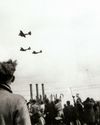
OPERATION MANNA
In late April 1945, millions of Dutch civilians were starving as Nazi retribution for the failed Operation Market Garden cut off supplies. eet as In response, Allied bombers launched a risky mission to air-drop food
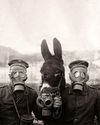
GASSING HITLER
Just a month before the end of WWI, the future Fuhrer was blinded by a British shell and invalided away from the frontline. Over a century later, has the artillery brigade that launched the fateful attack finally been identified?
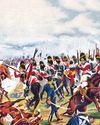
SALAMANCA
After years of largely defensive campaigning, Lieutenant General Arthur Wellesley went on the offensive against a French invasion of Andalusia

HUMBERT 'ROCKY'VERSACE
Early in the Vietnam War, a dedicated US Special Forces officer defied his merciless Viet Cong captors and inspired his fellow POWs to survive
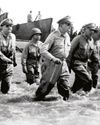
LEYTE 1944 SINKING THE RISING SUN
One of the more difficult island campaigns in WWII's Pacific Theatre saw a brutal months-long fight that exhausted Japan’s military strength

MAD DAWN
How technology transformed strategic thinking and military doctrine from the Cold War to the current day
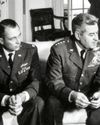
BRUSHES WITH ARMAGEDDON
Humanity came close to self-annihilation with the Cuban Missile Crisis, Broken Arrows’ and other nuclear near misses
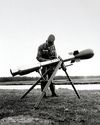
THE DEADLY RACE
How the road to peace led to an arms contest between the USA and USSR, with prototypes, proliferation and the world’s biggest bomb

THE MANHATTAN PROJECT
Einstein, Oppenheimer and the race to beat Hitler to the bomb. How a science project in the desert helped win a war